- How They Grow
- Posts
- How Zapier Grows: Automating Growth
How Zapier Grows: Automating Growth
Lessons on scaling to $230M ARR, acquiring 3M users, and reaching a $5B valuation with just $1.3 million in funding.
👋 Welcome to How They Grow, my newsletter’s main series. Bringing you in-depth analyses on the growth of world-class companies, including their early strategies, current tactics, and actionable product-building lessons we can learn from them.

Hi, friends 👋
Software integrations have been around for a long time. Since the 70s, in fact.
But, up until 2011, if you wanted to stitch two different products together and create some under-the-hood workflow, you needed development chops.
Today, we’re looking at the company that changed all of that.
Zapier (rhymes with happier) is an integration platform and app marketplace that allows anyone to connect the APIs of SaaS applications and build powerful automations.
Notion ⚡ Gmail
Sheets ⚡ Slack
Apollo ⚡ Google Calendar.
Or any of their 6,622+ apps integrated in millions of different ways. All in just a few clicks and without having to write a single line of code.
It’s beautiful.
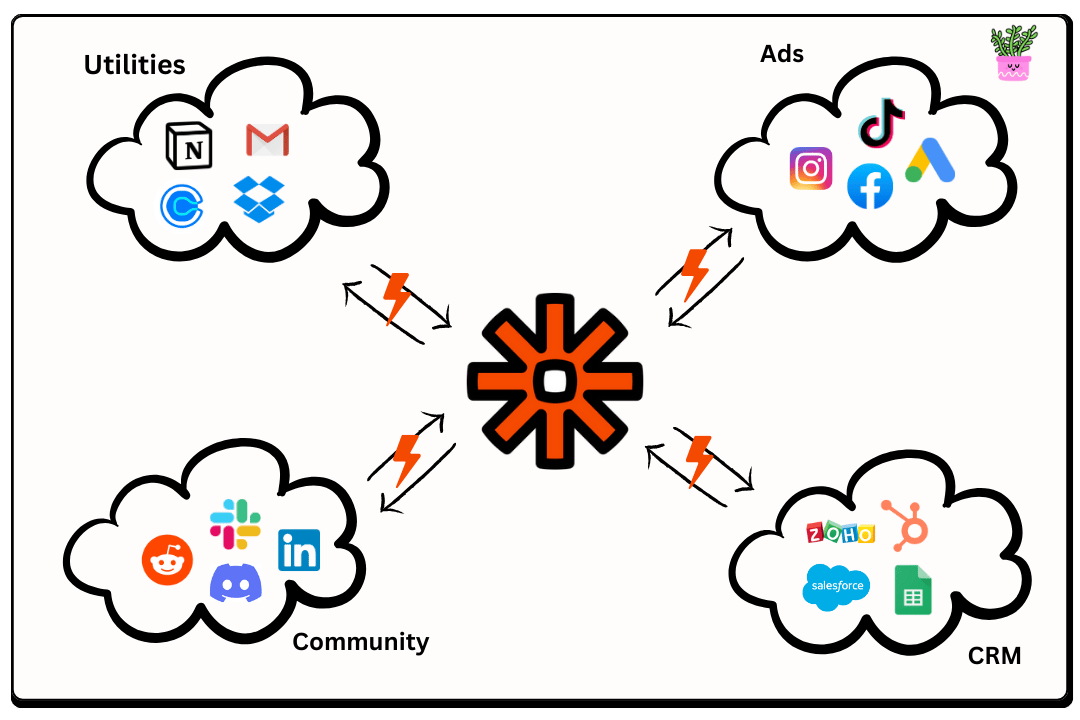
And so was Zapier’s timing, launching just when APIs were becoming more ubiquitous. With the increase in demand for cloud services and wild SaaS adoption (launching the same year Marc Andreessen famously wrote “Software Is Eating The World”), Zapier has helped establish and grow the $9B global Integration Platform as a Service (iPaaS) market. That’s a market on track to hit $62B by 2030, growing at a CAGR of 32.47%.
Since launching, Zapier has caught the wave all while building an incredible surfboard. This has made them the de facto layer of no-code business logic, where non-technical users orchestrate the flow of data between tools that otherwise wouldn’t talk to each other.
Rightly so, this magic has earned them quite the resume.
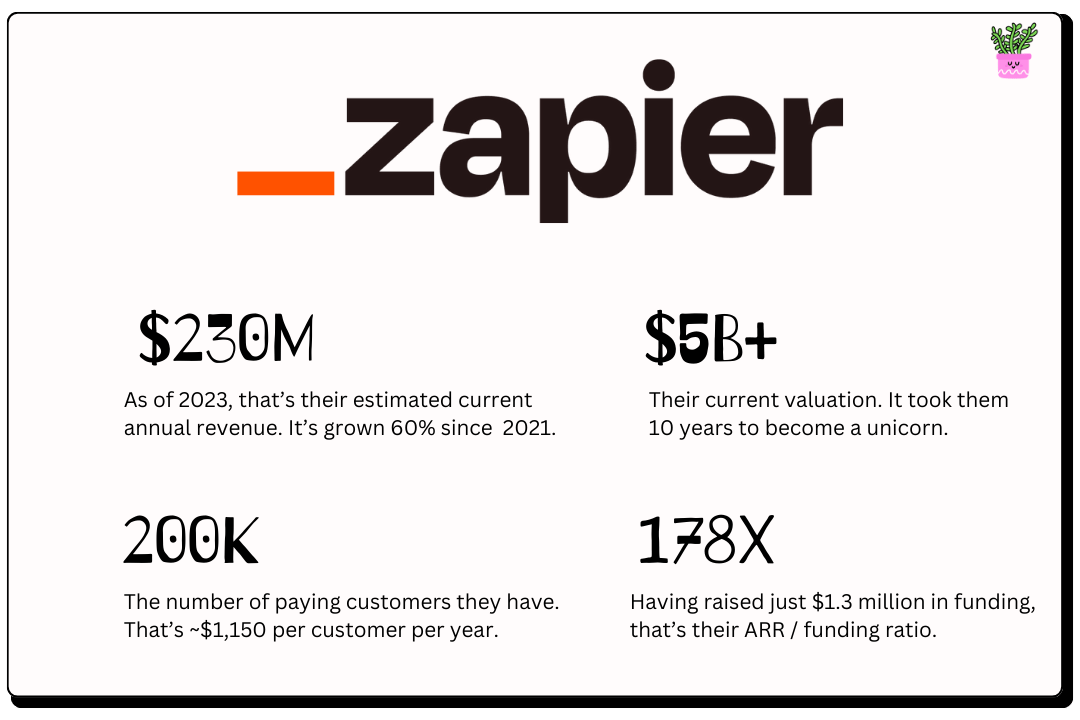
Not bad, especially when you consider they’ve raised just $1.3 million over a single round of seed funding. That’s not a typo.
This lack of venture capital, and basically being bootstrapped, has made Zapier incredibly capital-efficient.
It’s super rare for a company to reach $100M ARR (~1B valuation), especially without funding to drive growth. Stripe for instance did $14B in revenue in 2022, but they’ve raised $6.5B in funding. That’s ~2x ratio of ARR to funding. Zapier’s is 178X.
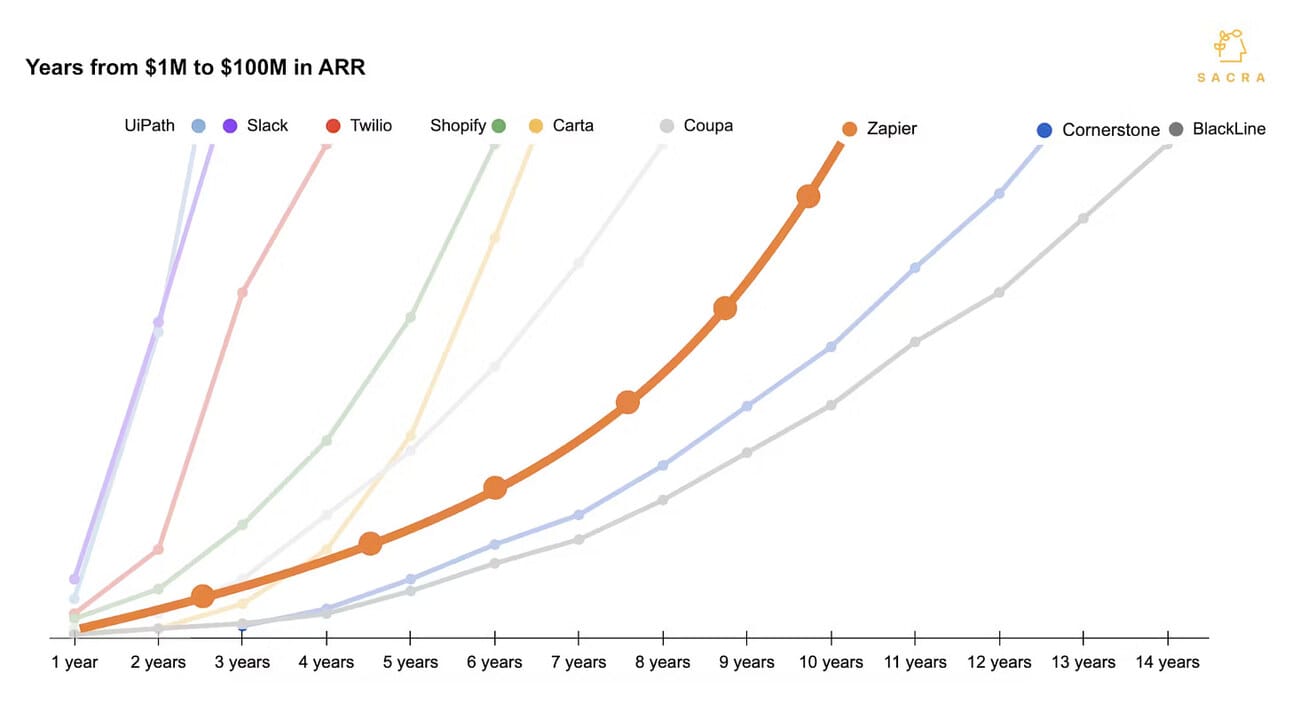
I won’t mince my words here and make promises—there's just no blueprint for that kind of growth with that little capital. But, let’s go through and unpack their strategies and growth levers. I learned a ton over the past 30ish hours, and hope you will too over the next 30 minutes.
p.s if you do, consider subscribing, supporting my newsletter by going paid, and perhaps giving this post a share at the end. These posts take about 30 hours each, and it would mean a ton.
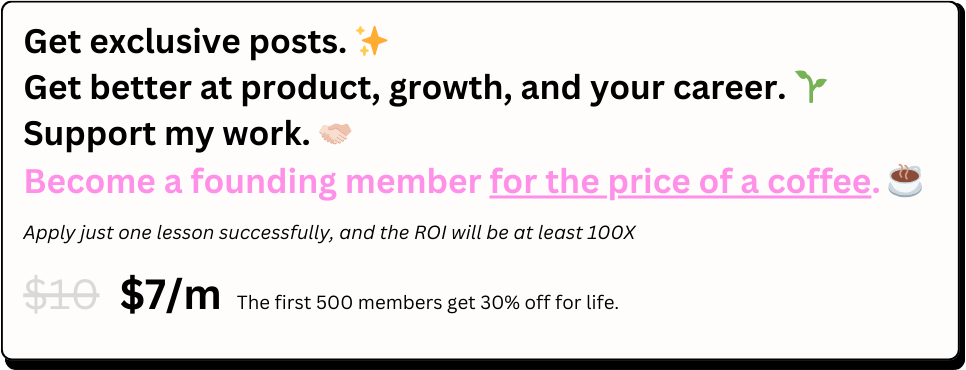
Here’s what to expect in today’s Zapier analysis:
The First Zap: Creating Lighting in a Bottle ⚡
Founding story
4 early acquisition tactics: From 0 to 600k users
Avoiding the VC hamster wheel: The capital efficiency playbook
Growth: From 0 to $230M ARR with $1.3M in funding ⚡⚡
The developer ecosystem network effect
Building an SEO-led growth machine
Sales-assisted PLG
Closing thoughts: From aggregator to vertically integrated platform 🤔
Actionable insights 🧠 🛠️
If you only have a few minutes to spare, here are just a few of the tactical takeaways from Zapier — from a building perspective.
Look out for startup ideas at the intersection of boring patterns and subtle inflection points. Inflection points are big shifts or changes that can lead to exponential growth or breakthroughs. It’s often where new categories come from.
Venture capital isn’t the only way: resourcefulness >> resources. Bootstrapped is a solid option that helps you build a capital-efficient business (without investor pressure) that you end up owning 80%+ of. However, if considering this path, Zapier drives home an important point—money isn’t the only currency you get by when you raise though.
Competing on being "“the best” or “the cheapest” is incredibly hard and expensive. But, anyone can be incredibly helpful: 10x your competition through your customer experience. To bake excellent support and customer centricity into your team—considering making everyone responsible for it.
Even if you have a buggy and incomplete beta product, charge for it. Making folks pay, even a nominal price, for access to a beta is a great filter and forcing function.
Growth accelerates tremendously once you let your community contribute to the ecosystem. At the heart of Zapier’s growth is their partnership network which helps them cover far more use cases within the product, as well as tap into a co-marketing flywheel. Opening the door as a SaaS product to third party developers means a platform shift that unlocks two-sided network effects.
Use programmatically generated landing pages to boost an early SEO strategy. This works especially well for horizontal PLG products and marketplaces, or products with unique data. This helps drive lots of page creation quickly across various search queries, bringing you early traffic and backlinks. While executing this, the key is to also be investing in human-generated blog content. This hybrid approach = a healthy mix of demand gen and brand awareness content.
Before adding on a sales-assisted motion to a pure PLG product—test it in a hypothesis drive way first. Sales is expensive, so first demonstrate that is actually improves your baseline metrics relative to self-service.
More on those, and many more nuggets inside.
p.s this post is too long for email, click here to read the full thing without interruptions.
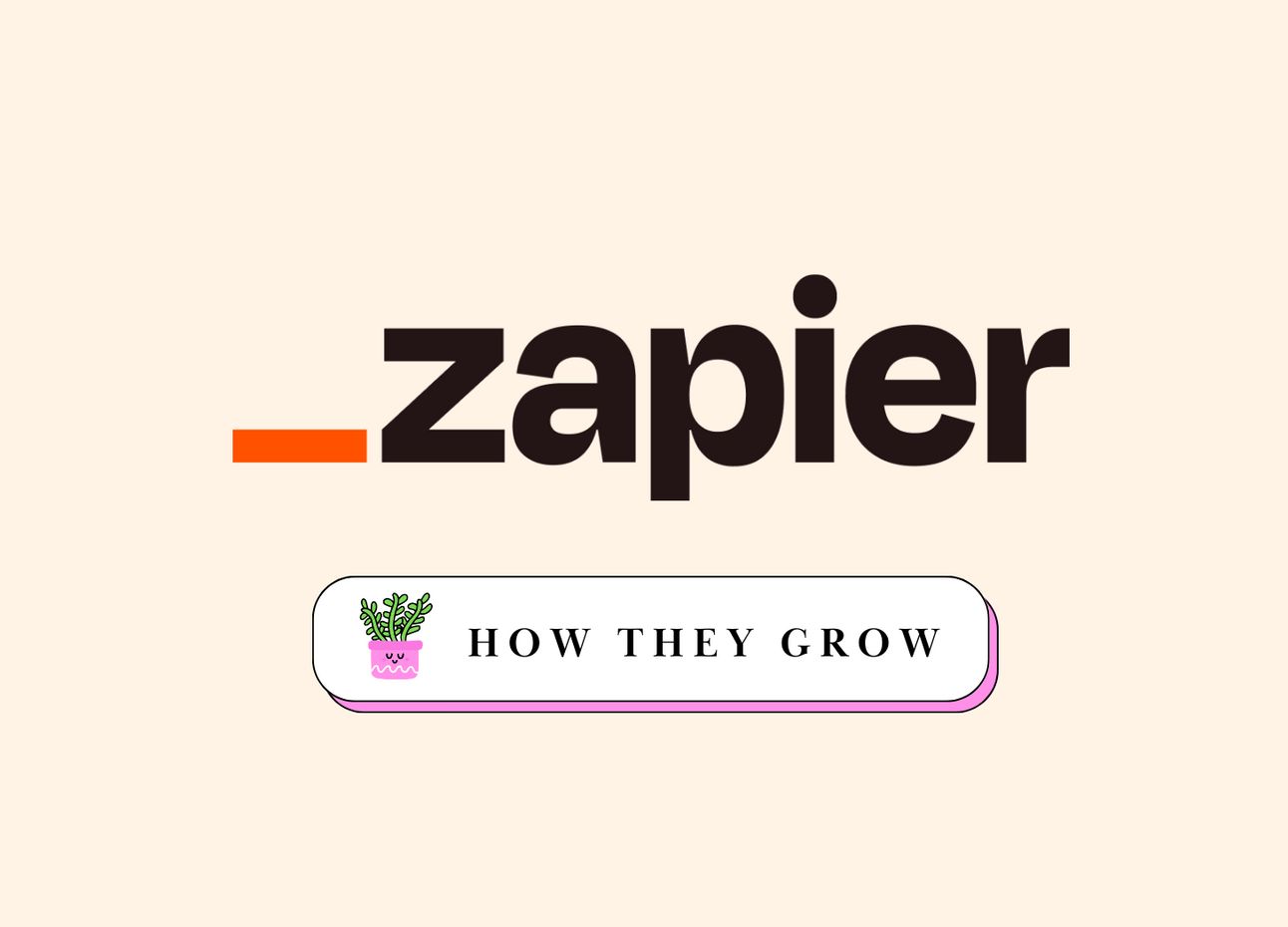
Before we hop in, a short word from this week's (highly-curated) sponsor…Storylane.

If you’ve ever tried building a product demo for your product before, then you know that doing it natively is not only time-consuming to build, but a real pain in the ass to maintain.
If you haven’t explored demos yet and you operate a SaaS app, they are an excellent onboarding tool to help your users get from 0 to all the value within your product.
That’s where Storylane comes in. They help you build killer product demos in <10 minutes.
With Storylane, you can leverage the power of interactive and personalized demos to shorten your sales cycles, increase prospect interactions, and convert more visitors. Storylane also gives you actionable data on demo engagement and gives you an AI assistant to help you figure out which demos are driving qualified leads.
To start boosting product-led growth and getting more customers, join other GTM teams at companies like Gong, Clari, and Twilio by checking out Storylane.
Alrighty, let’s get to it.
The First Zap: Creating Lighting in a Bottle ⚡
For anyone unfamiliar, let’s start with a 30-second primer on the core Zapier product.
When a SaaS app joins the Zapier marketplace, it becomes interoperable with thousands of other applications.
Simply, automations are made where events in one app trigger actions in another app, or multiple other apps via chained steps.
The core design paradigm is the Zap. AKA, the trigger-and-action:
A basic Zap might trigger upon the submission of a failed Stripe payment or someone submitting a low NPS score, ingest some key data, and then pipe the results into a Slack channel. More advanced Zaps can glue together multi-step automations using cool conditional logic, looping, and native transformations.
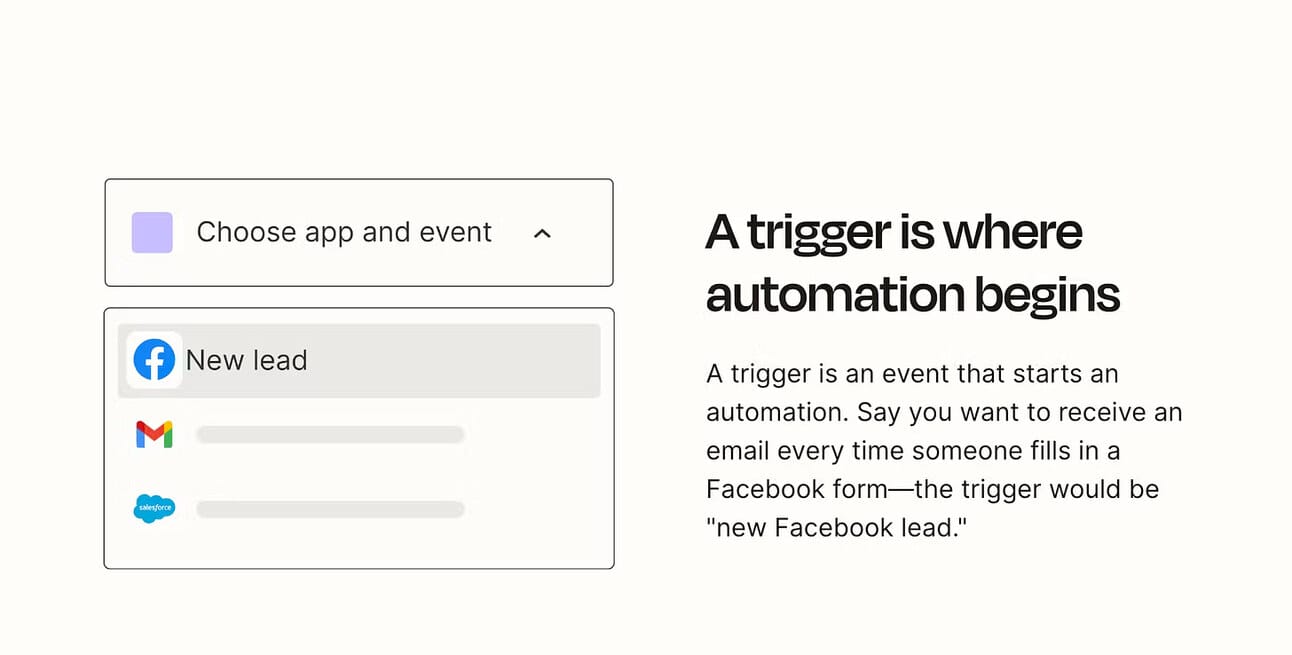
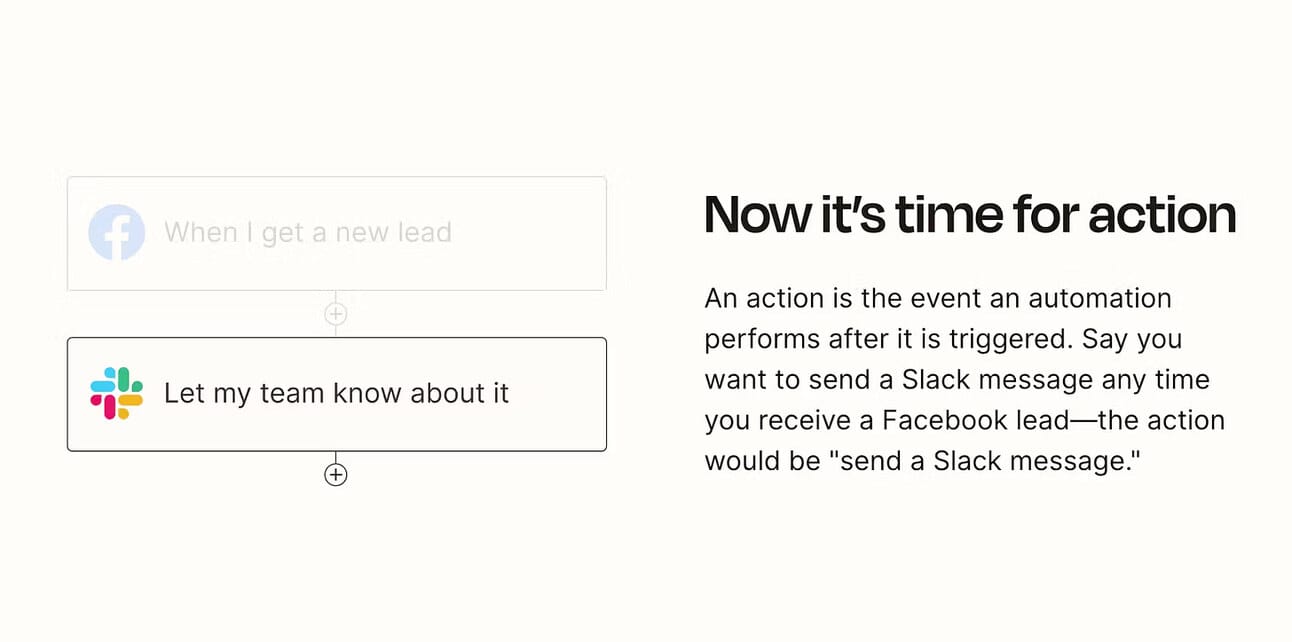
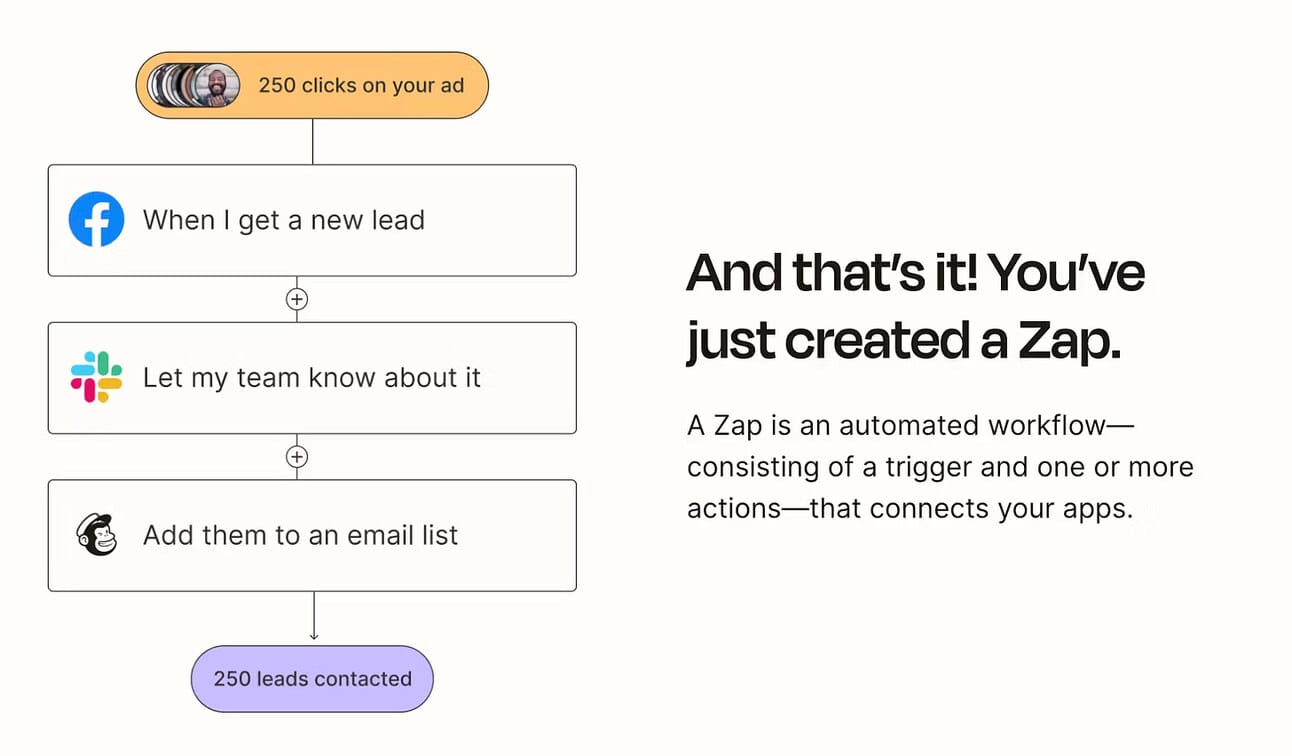
Simple, yet incredible powerful.
And now that we’re on the same page with what Zapier does, let’s look at how they got started at grew to 600K users in 3 years.
Missouri, 2010.
Outside of ripping it on the saxophone and shredding the guitar together in their local blues and jazz quartet, Wade Foster and Bryan Helming had another shared passion: building web apps.
In the town of Columbia, Missouri, the two friends were known as the "local internet folks" who could help you out with computer things. So much so in fact, that after graduation they built quite a roster of freelance clients.
It didn’t take long for Bryan to see a pattern—lots of these well-paying projects were about integrations.
Sparked by the entrepreneurial spirit, Bryan had the age-old thought: there must be a better way.
So, he dropped Wade a casual message for what was the beginning of no-code automations and a soon-to-be billion-dollar market.

The concept of building “the API of all APIs” had them hooked. So, the duo recruited Mike Knoop to the team and within about 2 weeks built a demo-able version of the app.
They pitched it at Columbia, Missouri’s first-ever startup competition in October 2011. Winning, of course. This was the motivation Wade (CEO), Bryan (CTO), and Mike (CPO) needed to give Zapier more consideration and time. ⚡
They applied for Y combinator. Got rejected. And instead of kicking their jobs and going all out in the garage, they decided to approach building Zapier in a much more methodical and conservative way.
We wanted to make a go of it and turn it into a business, but we were in Columbia, Missouri.
It’s not a place where there’s a lot of funding. Businesses are bootstrapped businesses, and so it had to be a side project. We had to keep our day jobs and approach it from that angle, and so that’s where we started.
The week after startup weekend, that Monday night, we hunkered down and thought about how we could make this work. And for the next few months, it was nights and weekends spent just trying to get the initial prototype out and find beta users.
— Wade Foster (CEO)
After a few months, they applied again to YC. This time they got accepted.
I’m sure a big part of that was Zapier had an incredible answer to “Why now?”
From 2006 to 2011, the number of public web APIs grew from 299 to 3,422.
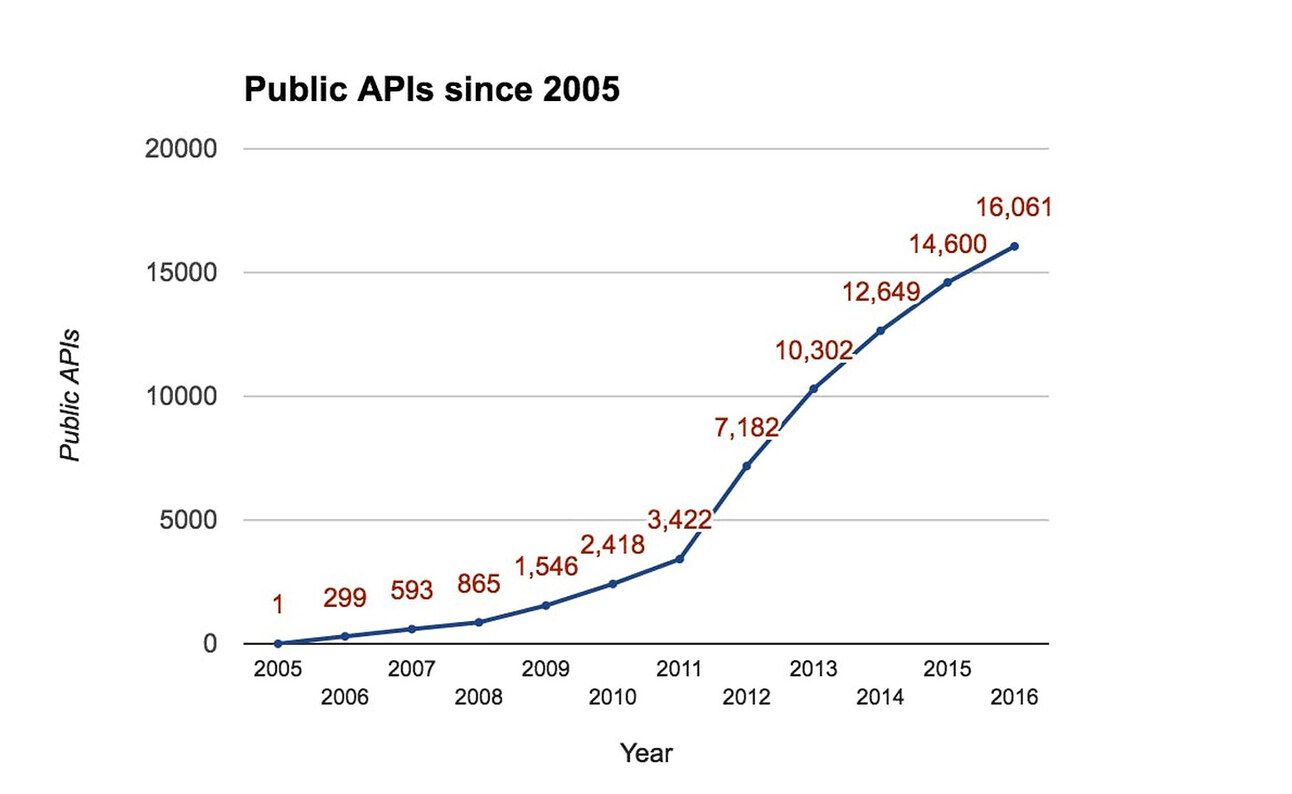
The big dogs (i.e folks like Salesforce, eBay, Facebook, Amazon, Twilio) made huge API investments. This helped them grow their platforms thanks to their API's ability to extend their own functionality with third parties. In true platform fashion, it allowed them to build an ecosystem that was far more valuable than the best product.
But building native APIs isn’t cheap. For every Salesforce, there were thousands of other startups and SMBs that wanted to be part of the open ecosystem of the cloud, but realistically just couldn’t write integrations for every tool in their customer's workflow.
This was Zapier’s powerful go-to-market hook: Instead of developing and maintaining an n-number of integrations for all these different tools, they could just write a single integration with Zapier. This was not only 10X cheaper and faster to do, but, it meant companies could rather focus on the important stuff—building and growing their core product.
Essentially, by positioning themselves as the universal switchboard for APIs at a time when everybody wanted extensibility, Zapier was able to ride and extend this tidal wave of growth in their market.
What you can do with that: 🛠️
Find business ideas by looking for mundane patterns. Bryan noticed a recurring demand in integration-related projects. This pattern indicated a gap in the market for an easier, more unified approach to integrations. Lesson: Always be observant of consistent patterns or requests from your customers or stakeholders. These patterns can point you to potential business opportunities or areas of innovation.
Look for inflection points. These are significant shifts or changes that can lead to exponential growth or breakthroughs. In Zapier’s case, it was the move to the cloud and popularity of APIs. Watch out for these 4 big types
Technology Inflections: Improvements in tech, like the increased accuracy of GPS, or the development of LLMs.
Adoption Inflections: Rapid changes in the adoption rate of a particular technology, like AI.
Regulatory Inflections: Changes in regulations that create new opportunities.
Belief Inflections: Shifts in long-held beliefs that open up new possibilities.
Resourcefulness >> Resources. Grit and scrappiness is what helped Zapier get to a point where they became appealing to YC and could scale further. Lesson: In the early stages of a startup, how you use what you have at your disposal (be it time, existing skills, or connections) can be far more impactful than the resources you lack. Don't wait for ideal conditions; start with what you have and iterate.
Early acquisition tactics: From 0 to 600k users
Let’s break down the 4 key components of Zapier’s early customer acquisition.
Finding B2B customers using an outbound forum strategy
Focusing on 10X better customer support by making everybody responsible for it
Making their customers the heroes of their content strategy
Getting folks to pay for access to a buggy beta product
Scouring forums and building 1:1 customer relationships 🤝
The first 8 months of Zapier’s journey are the textbook case of doing things that don’t scale.
For starters, all their early customers came from Wade spending hours a day searching through the forums of other SaaS products to find people asking (or complaining) about integrations. Once he found someone with the problem, Wade’s outbound playbook was to focus on building a relationship with that person by offering to help. More specifically, his approach to sourcing leads from a community was two-fold:
He’d offer pure help and information, explaining how the person could access the APIs and build the integration themselves
Only then did he add he was working on Zapier, a solution that made those steps way easier
That’s a really important point about working in a community. Don’t just come in hot and sell. People will downvote you real quick. You need to add value. Answer people’s questions without pushing your own stuff. That’s how you build trust.
People would post things like “I love Evernote, it would be great if it worked nicely with Dropbox,” or “I love MailChimp, it would be awesome if you had a Wufoo integration.”
And I would just comment in those forums and say, “Hey, here’s how you can do it… here are the API docs to these two services, and if you know how to code, here’s how you can make it work. OR, I’m working on a project that will make an integration for this and if you want to find out more, go to this link and let me know.”
And so those forum links, while they wouldn’t send a ton of traffic, would bring us 10, 15, 20 visitors from each one, but of those visitors, around 50% would convert and say “Yes, I really want this.”
When you’re very early stage, that’s super important because you don’t need a thousand customers, you just need 1 customer or 10 customers and we were able to go from nothing to something just through this very targeted outreach.
— Wade
For a company in the business of automation, this initial bootstrap approach might seem ironic. But, it was the willingness to hop on calls and give customers personal, one-to-one attention that gave Zapier an edge.
And that focus on building relationships with a few, but high-intent, customers likely wouldn’t have happened if Zapier had gone the venture-backed route. They just didn’t have money to blow on ads. Rather, they had time to invest in relationships. These personal connections with each customer opened up a lovely feedback loop in the process, helping them understand exactly what the product needed to do and what customers expected.
In this way, Zapier’s three founders were using the company’s small size and lack of capital to its advantage. As Wade said:
One of the cool things that startups can do that big companies can’t is to go fishing in small ponds. There are little channels that a big company would never waste their time on… But small companies can get in there, and it actually does move the needle.
Another great lesson there: When you’re an early-stage startup, scale is irrelevant. You can’t be focused on how you’re going to get your millionth customer. All you should be thinking about is how to attract your next customer.
Make everyone responsible for customer support 🛟
In Zapier’s early days, everyone at the company wore that hat of customer support. This stemmed at first from a matter of necessity—there simply wasn’t anyone else to do it.
But, the benefit of having everyone (even engineers) spending time speaking to customers directly became very apparent. Simply, the team became far more customer-centric and everybody sharpened their product thinking.
Engineers are often completely detached from the customer. While that’s not “bad” or “wrong” per se, there’s clearly a huge benefit to having more people think about the people they’re building for. And what better way to become closer to your users than spending a few hours a week helping out over support?
So, even as Zapier grew up and built a CS team, Wade made sure that providing stellar customer support would always be a pillar of how they operated. He did this by making shared CS part of Zapier’s culture and operating ethos.
The way he describes it is brilliant, and I love this concept of “three types of companies”. 👇
Kevin Hale who’s the founder of Wufoo, told me that there are three types of businesses you can build.
You can build a business that sells the highest quality product. Companies like Apple that build things that are best in class and have the price tag to match.
You can build a business that offers the cheapest deals like Walmart or Amazon.
The thing about the best and cheapest is that it’s hard to be either one of those for a new company. You’re probably not going to be the best, because your product is brand new. And being cheap is really hard because you can’t take advantage of economies of scale.
The third type of business you can build too is the one with the best customer service.
I really took that to heart, because we can’t be the best and we can’t be the cheapest, but we can definitely care the most, and so from day one, we thought “let’s get on Skype calls, let’s do things that might not scale right now, just so that we can make people really happy and really want to work with us.”
That’s something that any startup can do… anyone can provide awesome customer service. You don’t have to be a rocket scientist to just be nice and be helpful.
The way we do it is everyone has a shift.
Our engineers do all of our technical tickets, and they do it on a rotating basis, so today we have around 10 engineers, and so one week out of ten, they’re spending the whole week just doing customer support.
That helps in so many ways, because now the engineers see what the problems are with the product, and they see what customers are getting frustrated with.
There’s no misinterpretation between support and the other people who are building the product about what’s important in the users’ minds, because everyone knows.
Others—people in marketing and other roles—spend a four hour shift each week doing support, and it just puts them in the mind of the customer and really makes them care about the customer a lot more.
That’s something that we’ve done since day one, and it goes a long way toward building a company focused on customer service.
Make your customers the heroes of your content 🦸♀️
A huge pillar of Zapier’s growth has been their content engine. We’ll talk more about this because there are a few different prongs to it.
But let’s just keep the focus on the early days for a minute, because there was a pivotal shift in thinking here that brings us a great takeaway.
When Wade started the blog in 2013, Zapier’s content was really all about what the company was doing.
With the write-about-yourself approach to content, Wade found they could expect a few big wins here and there. But, people didn’t come back for it. Zapier wasn’t generating regular and predictable blog traffic. As Wade explained, something was missing. It didn’t help people learn. It wasn’t additive.
So, he changed their blog’s gears. Instead of writing about all things Zapier he decided to write exclusively about their customers and what they were accomplishing with the product. Now each post would (1) add social proof, and (2) reveal new tips and tactics. This made the content more inspiring and useful, thus giving people a reason to come back.
As Wade told Indie Hackers:
Oftentimes what your customers care about isn’t necessarily your company journey. They care about something unique to them.
At some point in time, I’d heard that Twilio had this strategy, which was “Make your customers your heroes.” And [Twilio’s] content strategy was just case study after case study of the cool things that people were building [with Twilio].
Wade saw this as a much subtler and friendlier way of creating brand and product awareness. One that skipped the boring and repetitive sales pitch.
⚠️ Keep reading…
This post is too long for email and will get cut off soon. To keep reading, hit the button below or click here.
Getting people to pay for a buggy product 💳
While in beta, Zapier did something fairly unusual: They didn’t just get people to give their unfinished product a try—they got folks to pay for the privilege.
For a tech beta, most companies just say “Sign up, it’s free, all you have to do is give us advice… we’ll take anyone’s advice.”
They just beg for customers.
We made people pay a one-time fee to get into our beta.
For the first few people, we charged $100 for access to the beta for as long as the beta lasts.
And that number moved around; we charged as little as $1, and eventually it settled in around $5 or $10 to get into the beta towards the end.
It’s not that we wanted to make money off of the beta, it’s that we wanted people who really thought this was important enough to pay for and spend some time with us for. The last thing we wanted was a bunch of tire kickers who were just trying it out for fun but had no plans to use it on an ongoing basis.
That little hurdle of just paying a little bit of money got us some really high-quality early users who went above and beyond in terms of providing feedback to us on the things that mattered.
— Wade
I think this idea is brilliant and super important for founders to think about. It’s definitely the status quo for folks to give away their beta for free. In part, because they are too shy to charge for something so new and will do anything to just get people using it. I’ve been there—you tell yourself we will charge once we iron things out, and that it’s free in return for learning.
But Zapier’s more contrarian approach here unlocks a lot of benefits. Namely:
Creating a valuable feedback mechanism with high-quality customers
Validating product market fit from the get-go
Building a community and creating advocacy
Zapier also shows us that how much you charge early beta users doesn’t really matter. You’re not necessarily trying to nail your pricing, and you’re not trying to bankroll yourself. Your goal is simply to create an important filter.
What you can do with that: 🛠️
10x your competition through your customer experience. This is a two-fold competitive advantage that (1) brings you closer to who you’re building for, and (2) drives loyalty and retention with your users. Being the best and being cheaper will cost you, but being super helpful is “free” for startups.
One lesson I love here is the value of having everyone on the team get involved in customer support in some capacity. There’s zero doubt that makes a more customer centric product across the board. Think about how you might do the same. I am.
For B2B, prioritize relationship-building over quick wins. Engage where your potential customers are and add value, even if it's in "small ponds". Don't shy away from platforms or channels that bigger companies may ignore. That’s where you can get a foothold. Remember, when you’re just getting started it’s all about the next customer, not the millionth.
Charge for beta, even if it’s symbolic. Charging, even a nominal amount, for access to a scrappy beta helps filter out casual users and attracts serious, invested customers. This means you’re listening to the right people and validating PMF sooner.
Upgrade to paid. Become a sharper PM. If you apply even just one learning successfully, I am absolutely confident this will pay for itself at least 100X over.
Avoiding the VC hamster wheel: The capital efficiency playbook
Zapier is one of the elite startups that has raised only one institutional round of funding.
And I don’t need to tell you that’s not because they couldn’t. But by taking just what they needed to get where they were going, it positioned Zapier to build a uniquely customer and employee-first culture.
Too often startups get so caught up in the frenzy of pitching and filling their bank accounts that they raise funds against their own interests or intuition. Money in the bank is a good thing, to be clear, and the more you have of it the more you can deploy it towards growth. But you should tread the hamster wheel lightly before you end up like this little fellow—raising and raising until you’ve lost control.

Remember, in the immortalized words of Biggie: Mo Money Mo Problems.
For Zapier, making the call to raise a round later was in many ways less about cash than it was the street cred. As a workflow automation tool, Zapier connects apps, and they needed to be able to talk to the startups behind those apps with authority. Wade describes how raising was just a route to these partnerships.
For us, YC was a way to get a stamp of approval, someone to say, ‘This company is worth paying attention to.’ That's the calculus we made. It helped us get connected to other partnerships and open just enough doors to get things going a little faster.
But the introductions were more the primer than the capital. They allowed us to do just more of what we were already doing — not runway to figure out what to do. So, if you do choose to raise, think of credibility as currency, too. Thought of in that way, if you do choose to raise capital, it may not have to be a lot. Maybe you want to hire one or two people or get some marketing experiments running. Just a little bit of 'kick' can get key things going.
And just two years after launching, with a mere $1.3 million raised, Zapier pulled off a feat that takes many companies years to achieve: profitability.
So, with that little kick—a zap, if you will—Zapier established product market fit and profitability within two years.
The outcome?
A $5B+ business where the founders still own 80% of their equity (at least as of 2021).
There are a few takeaways Wade shared with First Round Capital on how to actually pull this off:
1. Spend money like it’s your own Part of taking that kind of ownership of your company means deeply understanding your cash flow and making every decision about those dollars a personal one. It’s all your money. Every expenditure should align with the company's strategic objectives.
2. Save money like it’s for someone else The best way to keep your options on the table — and to make funding decisions from a place of strategy, not desperation — is to run your startup as fiscally efficiently as possible. Wade has seen two key areas where founders generally are likely to spend more than they need to.
a) Fixed assets: Office space vs. Distributed teams 🌍
Zapier attributes much of their success to having a fully remote workforce.
They never had to worry about how much square footage they could afford, or whether an office could handle their projected growth rates.
Now this remote-first vibe is more common, but circa 2012 it was definitely not the norm. Most founders after cashing their early VC checks hired quickly and funneled a team into a new office space.
But whatever your setup is, Wade shares one note of caution: think twice before moving toward a hybrid local/distributed workforce.
The toughest scenario seems to be doing the split, because now you have these two cultures. You've got your in-office culture and now you've got these remote people. It creates a second-class citizen out of remote workers because they aren't hooked into the hub.
b) Personnel: Hiring vs Automation ⚡
Figuring out when you need to hire—and when you don’t—is another key skill of the lean startup.
Before Zapier goes out to hire, they first lean heavily toward automating whatever they can. If there’s some task they can make more efficient, they focus on doing that first before adding headcount.
Now you might be wondering when investing time in automating something is worth it vs just getting someone else to do it.
There’s a really good XKCD comic about this that talks about how you know when to automate things. Simply, you do an opportunity cost analysis based on (1) how often you do you do the task, and (2) how long the task takes.
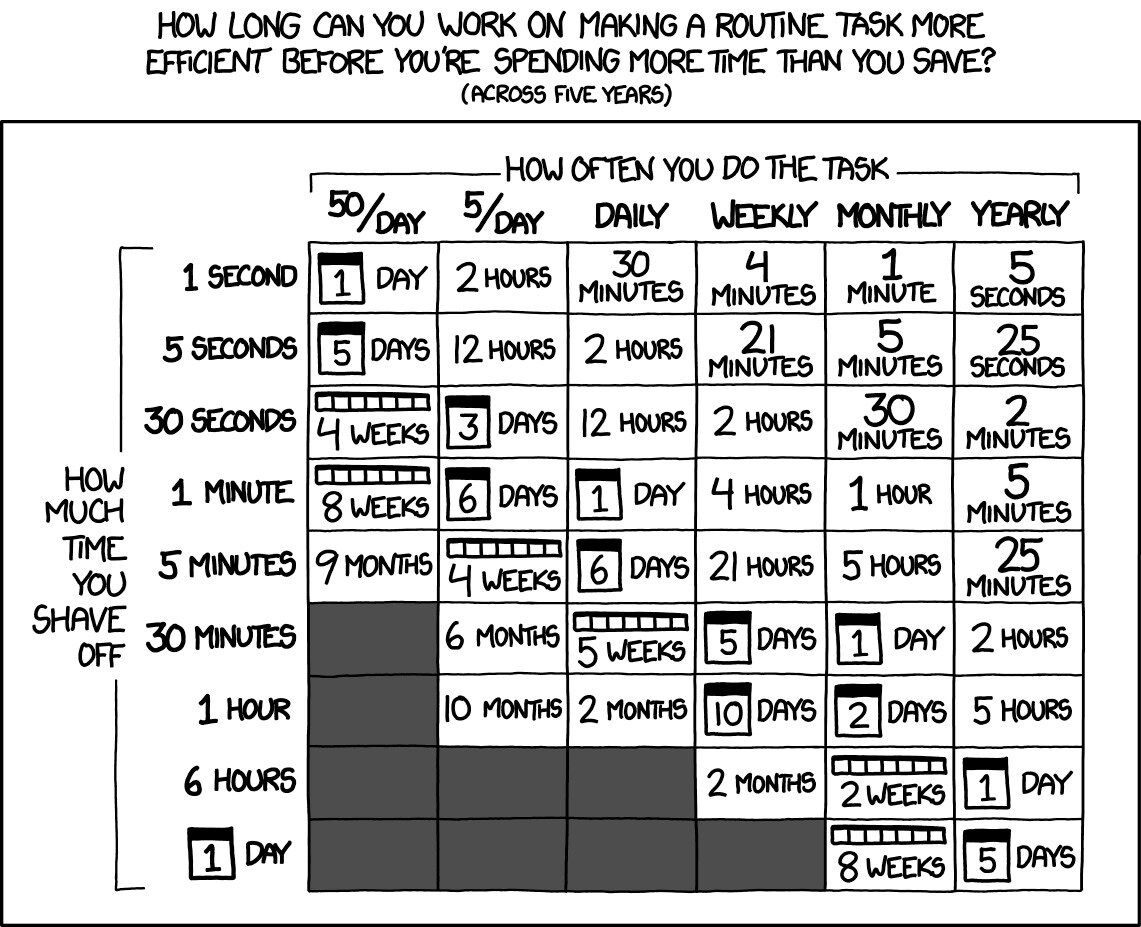
In fact, several of the Zapier engineers have this sitting next to their machines.
Anyhoo, making your operations more efficiency is only part of the equation. Hiring is still essential to growth. The key, as Wade notes, is to make thoughtful choices. Salaries are usually the biggest item on the balance sheet, and when done too liberally, it can quickly add a lot to the bottom line.
Generally when we decide to hire it’s for one of two reasons.
One, we're overworked in some way and we can't solve it otherwise. That’s most common in areas like support that are demand-driven.
Two, we’re looking to make product investments and don’t have the staff for all the initiatives on the table.
This approach of hiring “when they’re feeling a pinch” has led their team to grow slowly and deliberately to ~800 in 12 years. Wade consolidates this all into a lovely clean sentence:
“We've long had and honored this value: don't be a robot, build a robot.”
And Zapier’s playbook clearly works. Just look at this competitive map by Contrary Research showing money raised vs valuation. The top left is where you want to be.
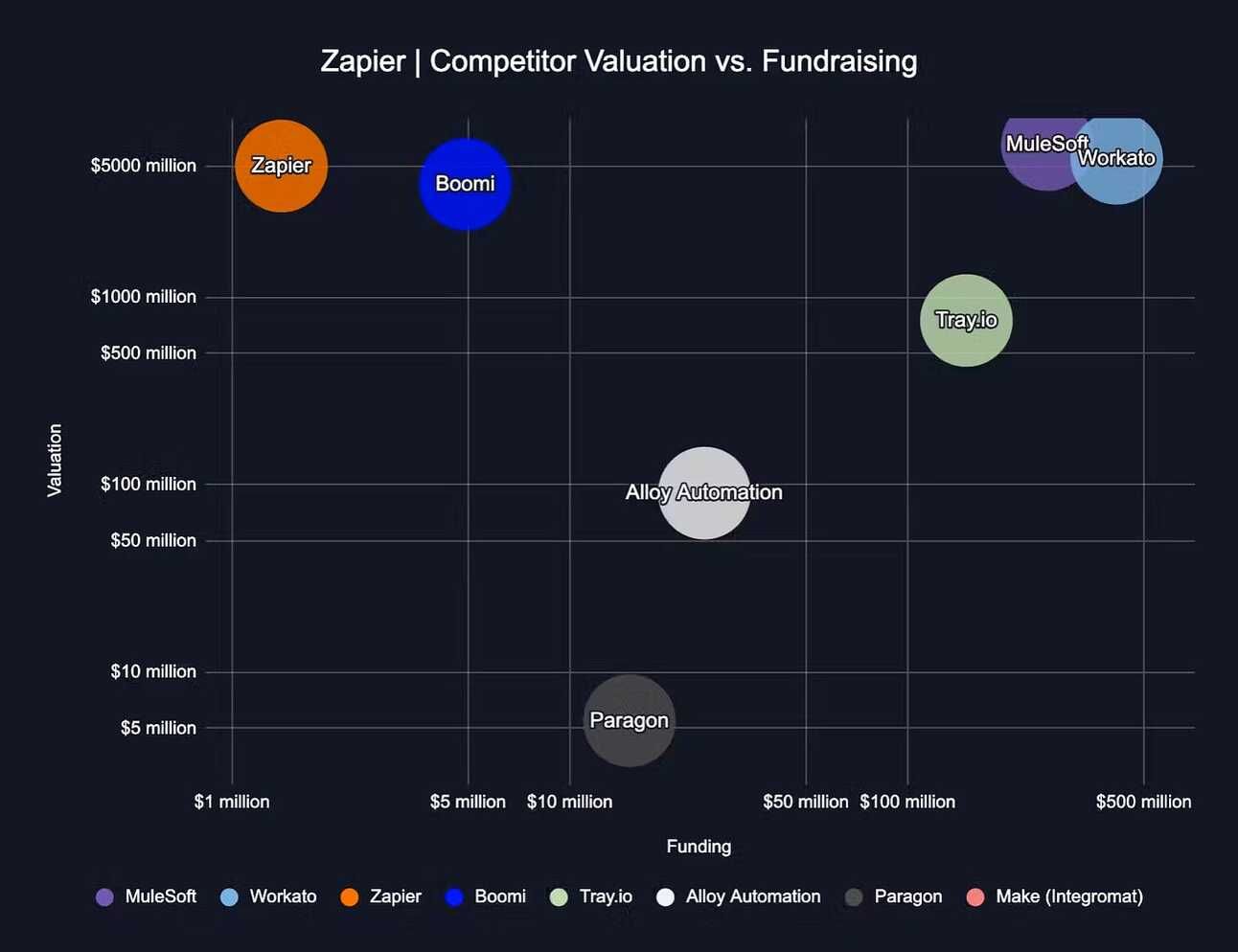
What you can do with that: 🛠️
Efficiency before expansion. Besides the earlier lesson of resourcefulness over resources, this is a standout takeaway from Zapier’s insane capital efficiency. Before going and posting an open role, think about if processes can be automated to improve existing folks productivity. This not only reduces costs but makes sure that resources are allocated optimally.
Thanks for being here and reading this post! If you find value in my work, a $7 subscription is the best way to support this newsletter. The first 500 folks who subscribe will get 30% off for life. ❤️
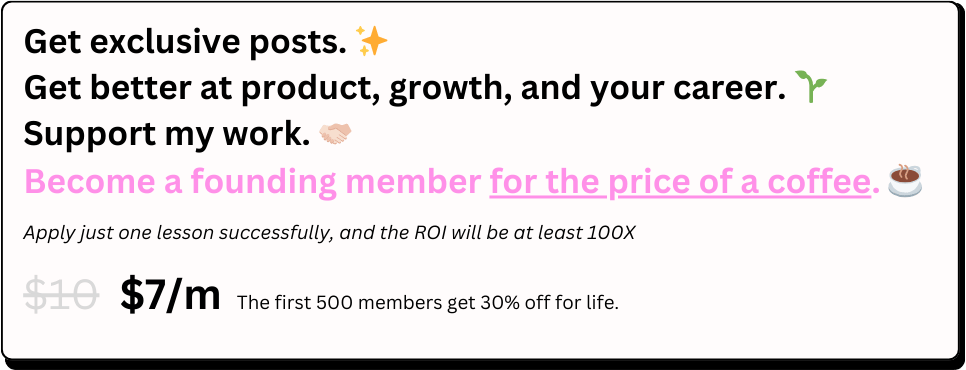
Growth: From 0 to $230M ARR with $1.3M in funding ⚡⚡
Zapier’s later-stage growth is largely being driven by three things:
A core cross-side network effect driven my their app marketplace
Having a force-to-be-reckoned with SEO-led growth machine that couples tightly with their partner network
In more recent years, layering on a sales-assisted model to move upmarket.
We’ll break down each and cover things like (1) the value of co-marketing, (2) how to execute programmatic SEO to drive insane amounts of high-intent traffic, (3) widening your surface for demand capture and playing the long SEO game through content marketing, (4) a 4-step process for evaluating adding a product-led sales motion, and more.
The developer ecosystem network effect
Zapier got started by building all the app integrations themselves.
When users asked for connections between say, a Google app and Facebook, the team took their public APIs and got them up and running manually. This fed nicely into their 1:1 relationship building and 10X support culture.
This was the perfect way to start.
But as Zapier became more popular and the demand for new apps increased, they realized building these integrations themselves just wasn’t scalable.
A new opportunity presented itself.
After some initial research, the team learned that companies would be happy to invest a little engineering time of their own to get their own app added to the Zapier directory.
Why?
Because Zapier at this point had a strong valuation proposition that made it worthwhile. In short, they had become an aggregator of SaaS products that had a good amount of visitors. This made Zapier a distribution channel for other companies. So, they invested in building a Developer Platform that allowed anyone to build an integration and tap into Zapier’s app marketplace.
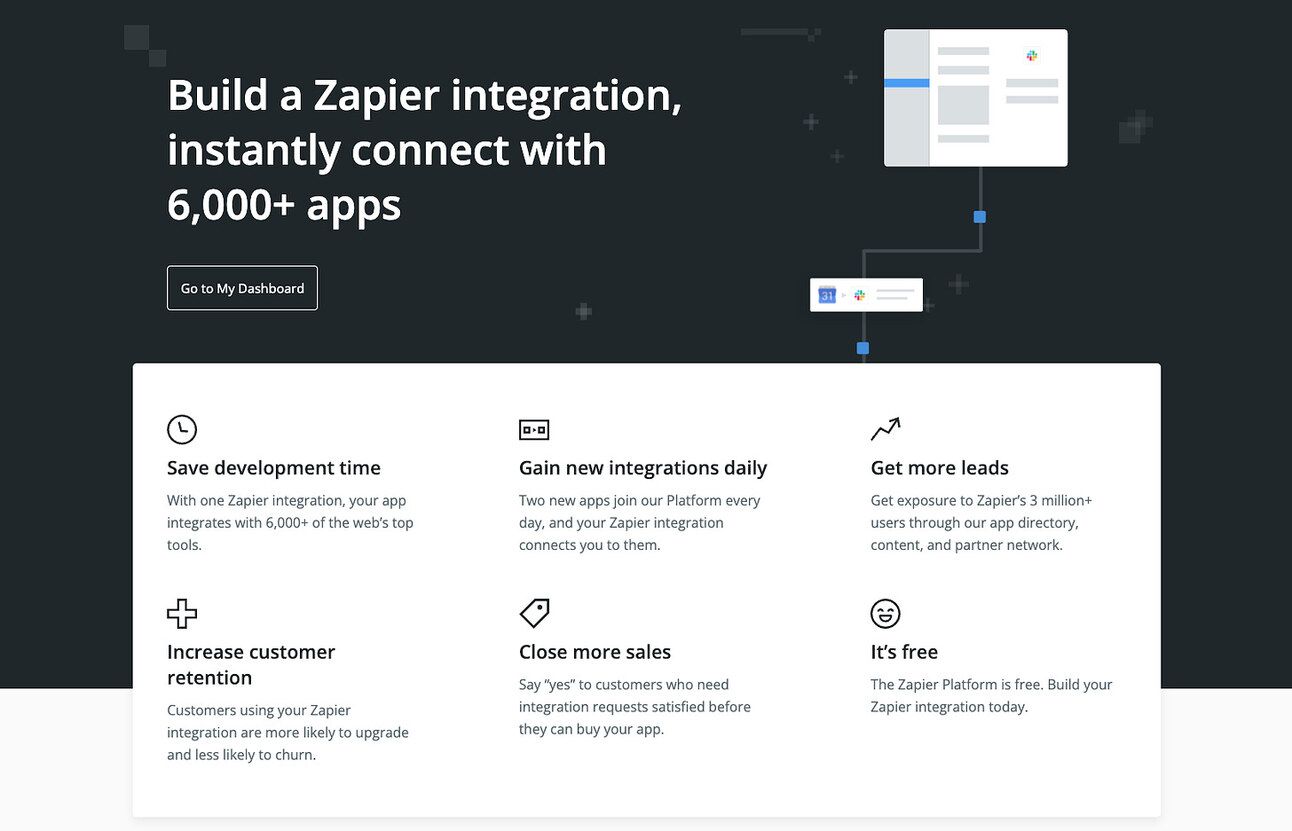
Today, the core value of being on Zapier is two-fold:
Discoverability: Zapier’s SEO dominance means that they’re often the first result for any Google search involving app integrations. Plus, users regularly search the Zapier app store for integrations. This can be a powerful acquisition channel for SaaS tools, especially considering the lead quality Zapier sends them (the use of automations is a leading indicator that a customer will retain and be an active user.)
Extensibility: With a Zapier integration, a SaaS tool can advertise hundreds of integrations with other tools and ensure that their users won’t churn simply because they can’t connect their data to some other tool in their stack.
The result of the dev platform is a beautiful flywheel: 🔂
Zapier improves their platform and makes it easier and faster for developers to use
Developers continue to release integrations
Each new app partner builds Zapier’s value and expands their potential reach
Zapier grows their use base and reinvests in the platform—making it more attractive for developers
More app partners join…
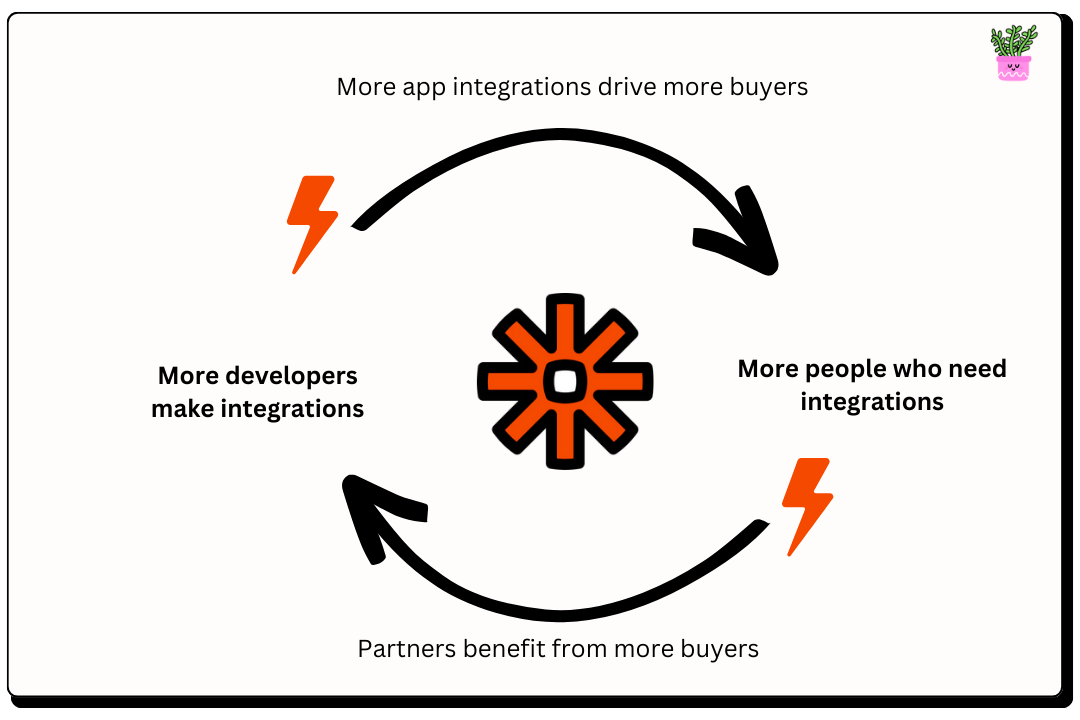
That decision to open Zapier up into a marketplace has helped them build a strong cross-side network effect—developers make apps which drive users; users drive developers to make more apps. This is the ultimate moat.
But, this network effect goes deeper. 👇
The partner co-marketing growth loop
With each new partner onboarded, four other forces are at work that makes that core app flywheel ever stronger. The first three are direct levers. The last one is more subtle, but the most powerful.
Zapier adds them to The Integration Partner Program. This helps teams best leverage their integration and earn benefits along the way based on (1) integration health, and (2) how many people the integration. AKA—the program keeps partners invested and educated on best practices around implementation and promotion.
They make it easy for partners to embed Zapier in their own apps. Just as SaaS apps benefit from being on Zapier, Zapier benefits from being surfaced across the 6K+ apps they integrate with. This makes apps with massive audiences—like Slack, Atlassian, Google, and Notion—important acquisition channels for Zapier.
Zapier automatically generates indexable SEO landing pages. This is a huge growth driver. Between the co-promotion of new integrations and search traffic to each of these landing pages, Zapier drives nearly all of their sales from inbound traffic. We’ll go deeper on this part in a moment.
And then the big indirect one…Zapier benefits from the growth of all businesses (and connected markets) in their ecosystem. The more popular an app gets, the more users they have and the more people want to connect it to other apps. This subtle strategy means that Zapier benefits from the work of thousands of top-shelf marketing teams. This is the Stripe and Shopify effect.
This all works because Zapier keeps the incentives aligned in the ecosystem. Everybody stands to gain through co-marketing. For instance, if HubSpot markets their Zapier integration…HubSpot’s customers gain…Zapier ends up winning some net new customers from HubSpot’s audience…some of those net new folks discover Airtable and Calendly through Zapier.
Simply, a rising tide in the Zapier-verse lifts all boats.
Next up, we’ll break down how Zapier is driving growth with a well-oiled content machine.
What you can do with that: 🛠️
We’ve seen a similar story in this newsletter with companies like Notion, Miro, Atlassian, Shopify, etc: growth accelerates tremendously once you let your community contribute to the ecosystem. You can’t build every use case yourself, and if your product lends itself to things like templates, integrations, add-ons that improve the product, etc, seriously consider what opening the door to developers means—a platform that unlocks two-sided network effects.
Building an SEO-led growth machine
Every month, Zapier leverages SEO to drive millions of high-intent searchers to their product.
For B2B SaaS companies, how they do it brings us a masterclass on blending programmatic SEO (computer-generated pages) with editorially generated content (made by humans).
One of the most interesting takeaways from their strategy is that they used their programmatic pages to drive bottom-funnel, high-intent visitors early in their growth journey. And they did this while remaining focused on the big SEO picture: the long-term potential of blog traffic.
Simply, blogs take much longer to gain traction. It takes time to post good content consistently, gain backlinks, and build search rankings to win on competitive keywords. Zapier knew it, and their strategy of focusing on tons of programmatic pages acted as a great early-stage booster engine while the blog was still gaining momentum.
So, let’s walk through:
How they created 100K+ search-optimized landing pages.
How they filled these pages with unique content, without having to write it themselves.
How they launch each page to generate a bunch of high-quality backlinks right out of the gate.
And how they use organic search to create a more powerful network effect.
How they are playing the blog game and making an invisible product discoverable.
a) Product marketing via programmatic SEO
Zapier gets around 8.5M unique visitors every month.

And of that, over half is through organic search.
Now, if you consider what Zapier is—an “automation tool”—if they played the standard B2B SEO approach, they would have tried to optimize for their domain keywords like “automation tool”. Except, the search volume for that is super low. In the US, it’s about 720 searches a month. Globally it’s 6,500.
Clearly, even if Zapier captured the entire universe for that keyword it wouldn’t get them close to the volume they’re getting.
Okay, so how does Zapier get such huge organic traffic?
Simple: they create and publish new landing pages automatically as soon as new apps join the platform. This is called programmatic SEO, and it means (1) they can be pushed out at a huge scale with virtually no human effort required, and (2) their content is almost entirely user-generated content.
Other companies using this strategy include Zillow, Airbnb, and Upwork. If you’re seeing a theme here, you’d be right—programmatic SEO leans itself to marketplaces/products with lots of search categories/combinations.
In Zapier’s case, they programmatically generate three types of templatized landing pages (optimized for Google discovery, of course) for each new partner that joins the marketplace.
A templatized landing page for the standalone app (like this Notion page). This is the root page for each app, and even though it’s automatically created and follows a template structure and layout, there is still a human-generated component to it. That part is really important. There is a ton of SEO value in each page having unique/relevant content, and having a person write descriptions of the apps is a big lever in keeping their page quality high. Now you might think that sounds like a lot of work for over 6K pages, but don’t forget that Partner Program: 👇
Zapier outsources SEO content to their app partners. As new partners onboard, part of that process involves writing the content for these landing pages. Not only does this keep a time-intensive part of SEO off Zapier’s plate, but it ensures the best quality of content because it’s the app creators themselves providing it.
They also outsource backlink building to partners. As part of the same onboarding, partners give some initial backlinks to these pages via their own integration pages or their own blog announcements. This not only creates a direct boost to page rankings, but it creates more exposure that may get the integrations written about on industry blogs, or shared on social media. Thus, more backlinks.
Similarly templatized pages for every app-to-app integration (like this Notion to Gmail page). Stemming off the root app page, this is where we start getting into the hundreds of generated pages per app. If anyone searches <some app> Notion integration, this is where Zapier catches your search intent.
Templatized pages for each workflow that's possible within each app-to-app integration (like this How to create Notion pages from new Microsoft Excel rows). Again, hundreds of possible pages get generated here.
By building and publishing templates for every app they support, every app-to-app integration, and every major workflow for connecting the apps together—if anyone searches for an integration between apps, Zapier owns the results.
That’s the secret to their organic traffic. Each new app that integrates with Zapier spawns n(n-1)/2 new SEO-optimized landing pages.
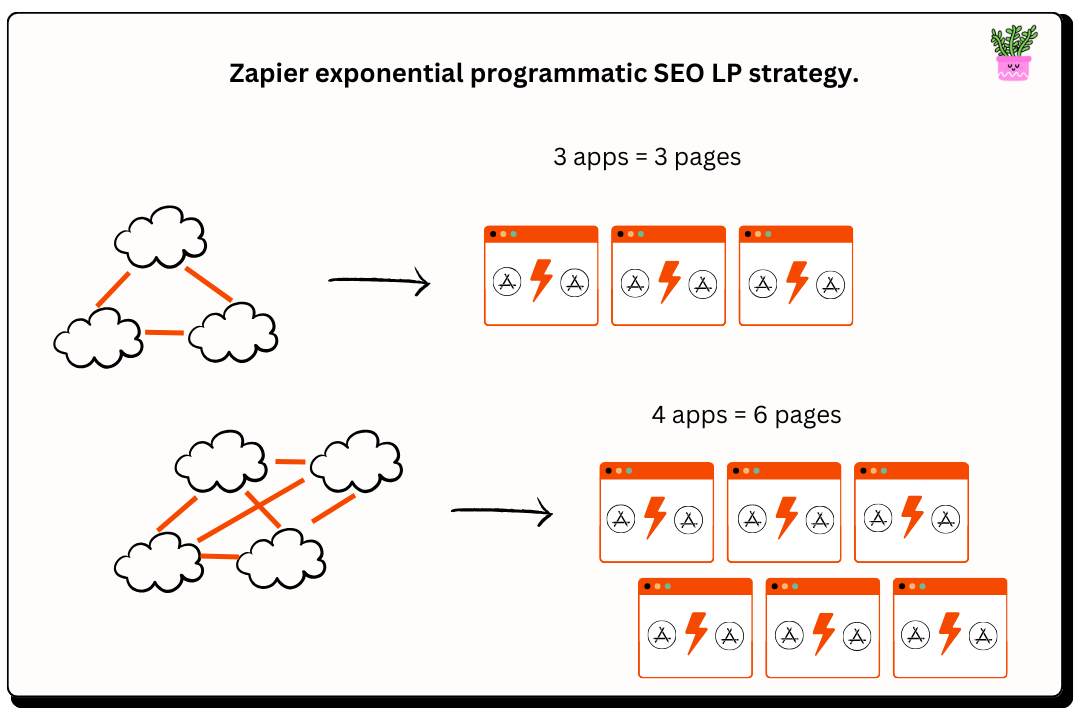
And with that search volume coming in, Zapier sets these templates up to drive users into their freemium product-led growth funnel.
They experiment here constantly around CTAs and product marketing messaging. Whether it’s the “Try it” button next to each workflow, or persuasive copy explaining that it will only take 3 minutes to get the apps connected, signing up for the product feels like a no-brainer.
Now programmatic SEO isn’t for everybody, but when looking at other major horizontal PLG companies—most have some form of template gallery that drives SEO pages like this.
If you’re building something similar, or are working on a marketplace, this would be a great product-led marketing initiative to consider.
Ranking high in search results can drive thousands of qualified leads every month. This is especially true you sell to individuals, startups, or SMBs and your pages are as well-tailored to meeting users’ search intent.
Unlike the short-lived traffic you get from temporary social media spikes, organic traffic compounds. It’s a build it once, enjoy traffic in perpetuity situation.
And this strategy is how they’ve turned SEO from a marketing tactic into Zapier’s main growth engine. 👇
b) Amplifying and protecting their network effect with SEO
Middleware SaaS platforms (AKA the software lies between an operating system and the applications running on it) like Zapier are one of the most obvious examples of network effects in SaaS.
As the universe of Zapier apps grows, the platform becomes more attractive and valuable for end users. And the more end users attracted to the platform, the more apps want to join the platform. It’s the holy-grail of virtuous cycles.
Zapier’s programmatic SEO strategy beautifully plugs into this network effect with no effort of Zapier’s part—amplifying the core growth loops impact.
More landing pages means more traffic and users
More traffic and users attracts more Zapier partners and the creation of more integrations
More integrations means more users and more landing pages advertising those integrations.
Another virtuous cycle driving capital efficient growth.

These landing pages also have a protective effect on Zapier’s expanding network, essentially surrounding it with an “acquisition moat” that competitors must cross if they want to effectively compete with Zapier.
This creates an SEO layer of defensibility. And compared to channels like paid search and ads which allow you to quickly expand your reach, but aren’t ideal for protecting your network long term due to the high cost of sustaining paid acquisition, an SEO moat is more durable.
c) Driving authority and generating new demand with content marketing
Zapier’s network of app and integration landing pages work great at drawing in visitors searching for a specific app or integration. However, there are also a lot of people searching for more general app categories and use cases that these landing pages don’t rank as well for.
These searchers haven’t yet narrowed their search down to a specific app, and are performing mid funnel research on apps available in a specific category. Or, they’re doing top of funnel research on solutions to a specific problem or use case, and may not even be aware that an app is a good way to solve their problem.
In order to connect with these searchers, Zapier users their blog and content marketing strategy to focus on exploring different app use cases, create authority in the productivity space, and review apps in different categories through listicles.
The content is an amplification or a megaphone for what we already do. You may not be looking for specific integration today, but you’re probably interested in being more productive and being able to automate some of your work. We can get you in our ecosystem through the blog or through the books we publish. It gets us into this broader discussion of which apps are best for running a business and how can we maximize our use of them.
— Wade
By not waiting until a need for a specific integration arises and exposing users to Zapier’s integrations early in the customer journey, Zapier is able to cast a wider net and generate new demand for its service.
This also positions Zapier’s integrations as a key consideration when choosing an app and building a software stack, rather than an afterthought that comes when you are trying to fill gaps in your existing stack.
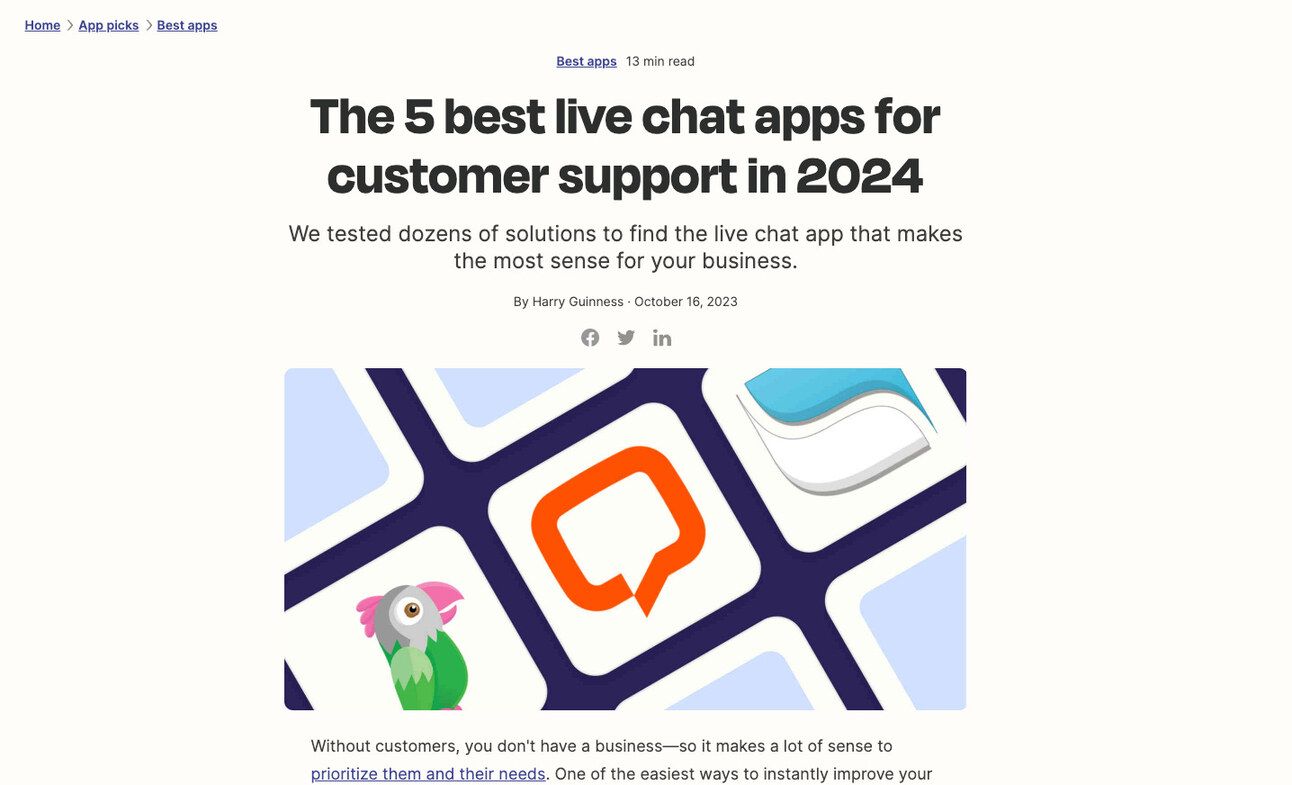
And outside of high-quality blog posts, Zapier has developed a powerful e-book strategy. As Wade describes it:
When we reached 100 posts on our blog, we realized that a lot of those older posts were great but hidden in the back. We also realized that there were certain themes we kept going back to, like remote work and apps. It only made sense to build a strategy from this to start writing books as blog posts.
We design a book and its chapters, and we publish them individually on our blog. Then, they live there for a period of time. Once they’re all finished, we package them up nicely, move them to our Learning Center, and generate books available on Amazon. We’re also on Leanpub and a bunch of other places online where books can be read. It’s just another way of packaging all this work that we’ve already done and exposing it to a broader audience. It acts as a resource, too. People like to link to books because books are authoritative — more authoritative than a single blog post.
Programmatic landing pages can be a super effective part of your SEO and content marketing strategy. In fact, even though Zapier’s blog receives over 3X as much traffic today, their programmatic pages could well drive more new user sign ups due to the bottom funnel nature of the keywords these pages target.
However, Zapier’s full funnel content strategy clearly wins over a pure programmatic play. Each month they are attracting millions of new visitors into their ecosystem, to be nurtured and educated in a way that fits the stage each visitor is at in the journey of a potential Zapier customer.
The blog also helps build a tremendous amount of backlink authority by acting as a magnet for external links with its broadly appealing blog content.
What you can do with all that: 🛠️
Identify any programmatic SEO opportunity that your product might have and leverage it to drive traffic and conversion at scale. If you find an opportunity, think about any unique data you have (or data you can pull from an API) to add unique text snippets to improve semantic context. The more unique each page, the better Google will rank them. p.s — if you’re a SaaS product but programmatic pages aren’t for you, look for other SEO tactics like competitive alternative pages, comparison pages, glossaries, etc.
Use multiple landing pages to capture maximum intent. Zapier use three tiers of landing pages to capture a broad range of search intent. Each page has a “templated structure and layout” combined with “human created descriptions.”
Customize your content strategy to ensure you have a healthy mix of demand gen and brand awareness content. Demand generation content is a part of almost every team’s marketing strategy, but remember to also create brand content that your audience resonates with. This helps keep you top of the mind when your audience aren’t actively looking to buy a solution like yours. And when they are ready, you will be their first choice.
Invest in link bait content that can drive high authority links organically at scale. Short research reports, user guides, and the like are great content types that drive an insane amount of backlinks. Go do some research, figure out where there is an opportunity, and invest in these areas early on. Backlinks are like compounds interest.
Leverage partners to amplify your marketing efforts. Many SaaS brands have found success in co-marketing. It not only helps build a relationship with your partners but also gives you access to their customers, which boosts your brand’s reach. Plan co-branded social campaigns, guest posting, webinars, shoutouts, etc with your partners to increase brand awareness.
Sales-assisted PLG
and I went deep into product-led sales last time when we looked at Miro. But this is becoming an increasingly important lever of growth, so today we’ll cover it from a different angle.
After growing extremely quickly and profitably by focusing on PLG paired with self-service purchasing, Zapier is now another PLG titan who have recently moved to add a sales motion to help fuel their next phase of growth.
Now, there are real risks in bringing sales into a self-service business. As SaaS expert Kyle Poyar tells us:
An overly aggressive sales team could turn off prospects who just want to use the product and be left alone, cannibalizing self-service conversion. Sales could push the product roadmap towards larger customers with deeper pockets, which could lead to a more complicated and harder to use product. And, let’s be honest, sales is expensive and can drive CAC up significantly. In many companies, it can start to feel like you’re building two different companies at the same time.
So what should sales look like?
Enter the hottest PLG sales role: sales-assist. These sellers - also called Onboarding Specialists (Airtable), Success Coaches (HubSpot), User Operations (Asana) and Enterprise Advocates (Atlassian) - partner with Product Qualified Leads (PQLs) to improve their product experience and navigate the buying process.
Sales-assist reps may work with users pre-conversion or post-conversion. What matters is whether they can uncover friction in the user’s buying process, remove that friction, and guide users to be more successful.
So, if Zapier was already killing it with PLG, why even consider adding sales? 🤷♂️

Simply, because they wanted to move upmarket and win enterprise accounts. And no matter how good your self-serve setup is, if you want to win the big fish accounts who have different buying process and vendor procurement process compared to lower and mid-market customers—you just have to have some level of sales.
So, instead of looking at how to do product-led sales today (we did this last time), let’s go through the 4-step process of how Zapier considered adding a sales motion: (1) understand the customer journey, (2) validate that sales improves on natural growth, (3) define the right plays, and (4) be thoughtful about compensation and operations.
Shoutout to Kyle Poyar for digging up this research and first reporting on it.
Step 1: Understand the customer journey 🪜
Zapier’s first goal was to learn as much as possible about the the upmarket buying process. For instance:
Why weren’t they comfortable self-serving into the product?
How do they go through the process of buying a product like Zapier? What approvals were required?
How did they need to purchase a product like Zapier? Could they use a credit card?
Where did customers get stuck or have questions?
They found folks had multiple layers of approval to go through, wanted to speak to folks at Zapier to ensure they’d have implementation support, and that swiping a credit card doesn’t always work for enterprise.
Step 2: Validate that sales improves on natural growth 👨🔬
The cost of a sales team can quickly rack up.
So to avoid building an expensive team just for the sake of it, Zapier approached it in a hypothesis-driven way: they wanted to demonstrate that sales actually improved on their baseline metrics relative to self-service.
Here’s what they did: 🧪
They created various cohorts, and studied user behavior within the first 90 days. Did folks who go through guided onboarding set up more zaps, invite more people on the account, active more workflows, etc.? Were existing self-service customers who had worked with an account manager more likely to expand their spend with Zapier than those who didn’t?
By being thoughtful about their experimentation process, they built confidence in the benefits of a sales motion and what would happen if they replicated it.
A key lessons from this process was that adding sales touchpoints didn’t just make converting upmarket accounts easier, but:
It also improved retention rates post-purchase because Zapier was able to gather so much more information on who these customers were and what they needed.
It created a powerful feedback loop that fed back into the product, allowing Zapier to improve the experience for self-service accounts as well.
Step 3: Define the right plays for PQL and outreach 🏈
The key with product-led sales is to engage the right accounts (product-qualified leads) at the right time with the right message based on what you know about them.
It’s all about introducing “touch” as late as possible into the process. Instead of the product doing everything, self-serve owns the entire lower half of the market, and for more upmarket prospects, it helps to qualify the right people for a sales team to then step in for the final mile.
This creates product-qualified leads where , for the high-ticket customers, sales can close PQL at a much higher rate than with marketing-qualified ones (MQL) because (1) they have real insights into how and why the company is using their product, and (2) the prospect has a familiarly with the product already.
I know…so easy. Not so simple when you’re starting from scratch. Last year Kyle created a PQL maturity curve to “help you pinpoint where you are on your journey and decide what to do next to get better.”
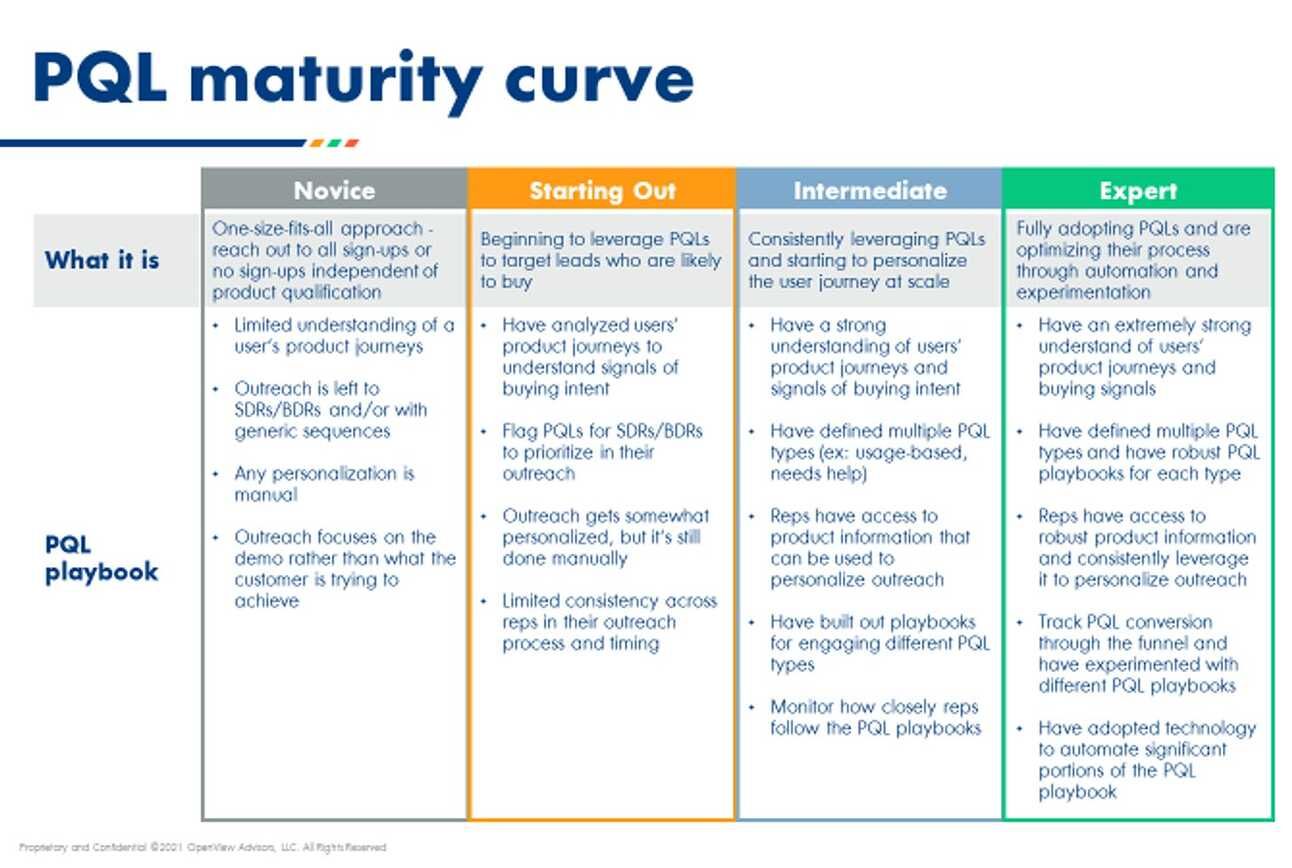
Zapier started by looking closely at different signals that might qualify a customer for a sales-assisted experience.
The first clear signal was simple: they requested a demo. These are the Hand-raiser PQLs— high-intent folks who actively want to talk to sales. If you’re lucky enough to get a high volume of hand-raisers, consider screening them against your ICP to make sure they’re a good fit and worth the time.
Outside of hand-raises, Zapier have established a few other methods for qualifying an account for sales.
Multi-player use: Are there multiple active users on a specific domain using Zapier?
Usage patterns: Is the account growing its usage over time?
Use case: Does the depth and variety of apps they’re using suggest that they’d benefit from assistance?
Role: Does the user’s role align with Zapier’s ideal customer profile and where Zapier sees the most success?
Based on the qualifying signal, Zapier’s sales-assist reps then form a personalize pitch based on that accounts context to get the ball in motion.
Some key points to consider at this phase:
Establish targeted plays depending on the type of PQL and what they need from you.
Your outbound plays should be omni-channel (email, in-product chat, calls, etc)
Test to figure out the right balance between helping folks use your product, and then getting them to pay more of it. They key is leading with curiosity.
“Skew too far toward the former, and you may miss opportunities to guide adoption, conversion, and expansion. Skew too far toward the latter, and your team will be viewed as commercially motivated and salesy, cheapening their product guidance.” - Rob Falcone, Guru
Step 4: Be thoughtful about compensation and operations 🧘♂️
In the initial stages of testing sales-assist, Zapier made the decision to compensate everyone on a 100% base structure.
Not the norm for a sale team, so why did they do that?
Because it created the right incentives during the critical foundational and learning stages. Instead of folks just prioritizing the close, they could instead be laser focused on setting a strong base for sales-assisted growth.
[Zapier] wanted to encourage feedback loops with product, marketing, billing and legal as well as documenting winning motions that made sense for the team. Individuals are rewarded based on team success, measured on a quarterly basis, rather than their own quota retirement.
— Kyle Poyar
Closing thoughts: From aggregator to vertically integrated platform
Before I let you go (or before you give me the boot here 👟), bear with me for one last parting thought.
People will always have a need to pipe data between tools that don’t talk to each other. Zapier also has a unique proximity to their end users that gives them a high resolution view into how people use their tools. Which, combined with their SEO engine, means they will likely continue to be a big channel through which many SaaS apps reach new users.
And behind all of that is the macro growth of low-code/no-code market.

In other words, Zapier is in a strong position to keep growing. The final question is, how big can they get?
One of the challenges Zapier faces is the rise of native integrations. The more that companies bring popular integrations in house, the more Zapier risks being the platform for the the long-tail of more niche automations.
If Zapier is duct tape, a more integrated SaaS ecosystem means less of it is needed.
A cautionary analogous example is Dropbox. As soon as SaaS apps started building their own collaboration and storage features, the less Dropbox was needed.
Dropbox’s core feature, file-in-the-cloud, was distributed. Dropbox was disintermediated, and they are now a $9.6B company that probably could have been worth 5X that.
For Zapier to truly break away, they need to overcome three big hurdles:
The disintermediation threat posed by native integration API products like Tray.io and Paragon
The ability of verticalized, drag-and-drop automation products like Parabola and Alloy Automation to peel off Zapier’s market share in specific markets
Other horizontal tools like Airtable building out their own integration tools to keep users on their own platforms
And speaking of Airtable, Wade references three flag-bearing companies within that low-code/no-code ecosystem that create the “AWZ stack”
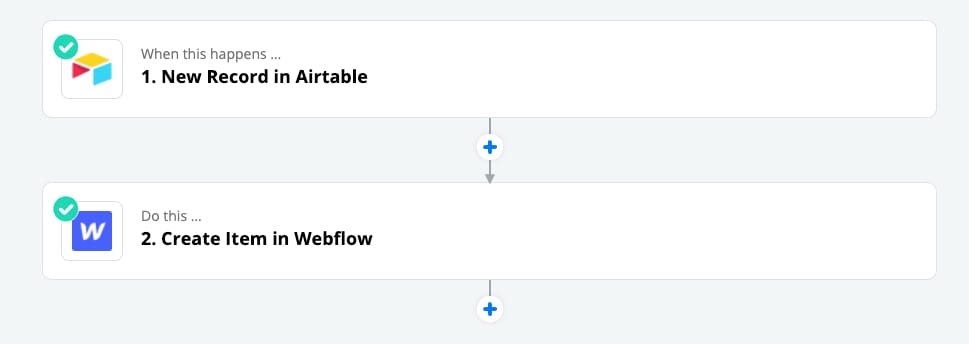
Except, as Wade rightly spots, there’s rising competition within this stack as each player eyes consolidation. Airtable is encroaching on automation…Webflow is moving backwards into data management.
There seems to be a race for an all-inclusive low-code/no-code killer platform.
To win, Zapier should be pulling the reverse Uno card on Airtable, thus disintermediating Airtable by building their own Zapier-native data store.
Outside of going on the offensive, this has two other benefits:
That last part is particularly important given native integrations are generally superior, and that’s what Zapier is up against.
With their own data store, they’d be in a position to turn their user experience problems on their head for three reasons:
All of Zapier’s integrations would become native integrations.
With a centralized database, they’d solve the no-code data problem of fragmented data.
Unlike Airtable, Zapier wouldn’t have the challenge of convincing people to store their data in a new tool. Simply, because they’re have (1) mindshare, and (2) already hooked into all the SaaS tools that they use and they already have folks login details and authorization to pull data out of them. All they’d have to do is pull it all into one place. That’s a huge GTM distribution advantage if they went this route.
When I started this piece and was poking around their product, at first I had no idea what this little Tables feature was for. Many many hours later…it looks like this might be the seed for Zapier’s future.
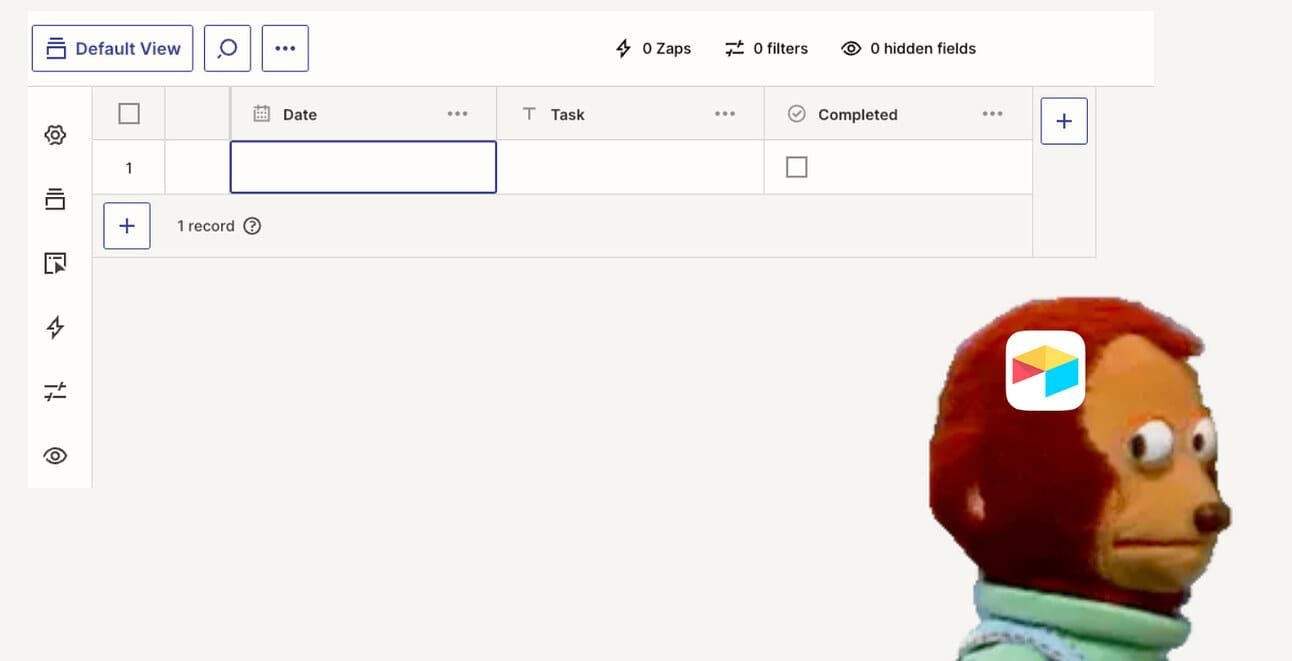
Aaand Interfaces too…
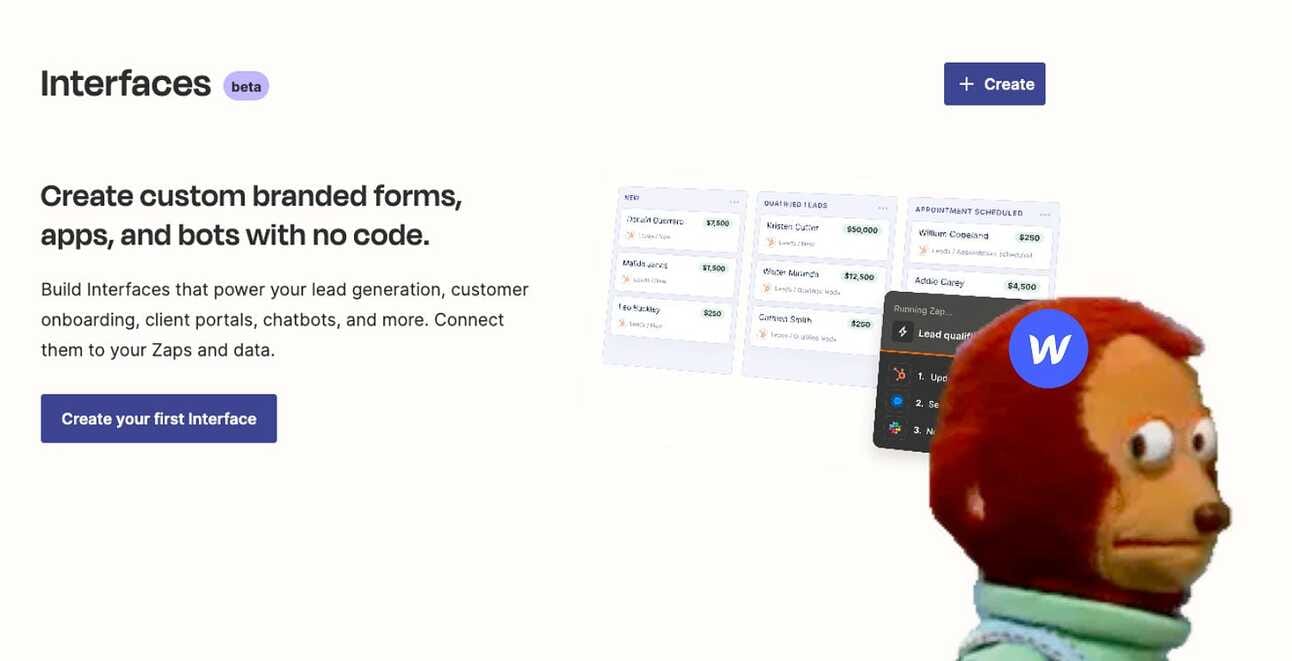
Looks like they’re not wasting any time in becoming the low-code/no-code vertically integrated super aggregator platform.
That was quite the mouthful.
Arrivederci 👋
And that’s a wrap folks on our Zapier analysis…
Thanks for reading! If you learned anything new today, you can sign up here for more issues. Also consider sharing this post, perhaps becoming a paying subscriber to support my work, or if you are a paying subscriber already, giving a gift subscription to a friend, colleague, or family member.
Until next time.— Jaryd ✌️
Reply